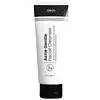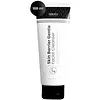What's inside
What's inside
 Key Ingredients
Key Ingredients

 Benefits
Benefits

 Concerns
Concerns

 Ingredients Side-by-side
Ingredients Side-by-side

Water
Skin ConditioningCocamidopropyl Betaine
CleansingGlycerin
HumectantSodium C14-18 Olefin Sulfonate
CleansingLactic Acid
BufferingDecyl Glucoside
CleansingPEG-150 Distearate
EmulsifyingPotassium Hydroxide
BufferingMethyl Gluceth-20
HumectantDisodium Cocoyl Glutamate
CleansingPhenoxyethanol
PreservativeSodium Chloride
MaskingHydroxypropyl Methylcellulose
Emulsion StabilisingSalicylic Acid
MaskingSuccinic Acid
BufferingPropylene Glycol
HumectantArginine
MaskingSodium PCA
HumectantButylene Glycol
HumectantAloe Barbadensis Leaf Extract
EmollientTetrasodium EDTA
Sodium Sulfate
Ethylhexylglycerin
Skin ConditioningCamellia Sinensis Extract
AntioxidantCentella Asiatica Leaf Extract
Skin ConditioningWater, Cocamidopropyl Betaine, Glycerin, Sodium C14-18 Olefin Sulfonate, Lactic Acid, Decyl Glucoside, PEG-150 Distearate, Potassium Hydroxide, Methyl Gluceth-20, Disodium Cocoyl Glutamate, Phenoxyethanol, Sodium Chloride, Hydroxypropyl Methylcellulose, Salicylic Acid, Succinic Acid, Propylene Glycol, Arginine, Sodium PCA, Butylene Glycol, Aloe Barbadensis Leaf Extract, Tetrasodium EDTA, Sodium Sulfate, Ethylhexylglycerin, Camellia Sinensis Extract, Centella Asiatica Leaf Extract
Water
Skin ConditioningGlycerin
HumectantCocamidopropyl Betaine
CleansingPotassium Laureth Phosphate
EmulsifyingSodium C14-18 Olefin Sulfonate
CleansingTrehalose
HumectantSodium Chloride
MaskingPhenoxyethanol
PreservativeDisodium Cocoyl Glutamate
CleansingMethyl Gluceth-20
HumectantSodium PCA
HumectantCitric Acid
BufferingButylene Glycol
HumectantInulin
Skin ConditioningDecylene Glycol
Skin ConditioningSaccharide Isomerate
HumectantNiacinamide
SmoothingTetrasodium EDTA
Sodium Sulfate
1,2-Hexanediol
Skin ConditioningCentella Asiatica Leaf Extract
Skin ConditioningCitrus Paradisi Fruit Extract
Skin ConditioningFructose
HumectantPropylene Glycol
Humectant2,3-Butanediol
HumectantCeramide NP
Skin ConditioningCeramide Ns
Skin ConditioningSodium Citrate
BufferingSodium Hyaluronate
HumectantHydrogenated Lecithin
EmulsifyingGlyceryl Stearate
EmollientCeramide As
Skin ConditioningCholesterol
EmollientCeramide EOP
Skin ConditioningCeramide AP
Skin ConditioningEthylhexylglycerin
Skin ConditioningWater, Glycerin, Cocamidopropyl Betaine, Potassium Laureth Phosphate, Sodium C14-18 Olefin Sulfonate, Trehalose, Sodium Chloride, Phenoxyethanol, Disodium Cocoyl Glutamate, Methyl Gluceth-20, Sodium PCA, Citric Acid, Butylene Glycol, Inulin, Decylene Glycol, Saccharide Isomerate, Niacinamide, Tetrasodium EDTA, Sodium Sulfate, 1,2-Hexanediol, Centella Asiatica Leaf Extract, Citrus Paradisi Fruit Extract, Fructose, Propylene Glycol, 2,3-Butanediol, Ceramide NP, Ceramide Ns, Sodium Citrate, Sodium Hyaluronate, Hydrogenated Lecithin, Glyceryl Stearate, Ceramide As, Cholesterol, Ceramide EOP, Ceramide AP, Ethylhexylglycerin
Ingredients Explained
These ingredients are found in both products.
Ingredients higher up in an ingredient list are typically present in a larger amount.
Butylene Glycol (or BG) is used within cosmetic products for a few different reasons:
Overall, Butylene Glycol is a safe and well-rounded ingredient that works well with other ingredients.
Though this ingredient works well with most skin types, some people with sensitive skin may experience a reaction such as allergic rashes, closed comedones, or itchiness.
Learn more about Butylene GlycolCentella Asiatica Leaf Extract comes from the leaves of an herb plant native to Southeast Asia. Centella Asiatica is rich in antioxidants and amino acids. It can help reduce irritation and soothe the skin.
Many active components found in centella asiatica, such as Madecassic Acid and Asiaticoside, encourage the skin to naturally produce hyaluronic acid. This helps keep our skin hydrated. Many of these components also show antioxidant activity and may help reduce the signs of aging.
Research shows centella asiatica can help increase Type I collagen production by increasing fibroblast production. Fibroblast helps form connective tissue.
The combination of all these properties makes centella asiatica leaf extract effective at soothing the skin.
Other components of centella asiatica leaf extract include Vitamin A, vitamin C, several B vitamins, and Asiatic Acid.
Recent studies found madecassoside may help prevent damage from UV rays by preventing UV-induced inflammation. Further research is needed.
This plant has been used as a medicine and in food for many centuries. As a medicine, it is used to treat burns, scratches, and wounds.
Learn more about Centella Asiatica Leaf ExtractCocamidopropyl Betaine is a fatty acid created by mixing similar compounds in coconut oil and dimethylaminopropylamine, a compound with two amino groups.
This ingredient is a surfactant and cleanser. It helps gather the dirt, pollutants, and other impurities in your skin to be washed away. It also helps thicken a product and make the texture more creamy.
Being created from coconut oil means Cocamidopropyl Betaine is hydrating for the skin.
While Cocamidopropyl Betaine was believed to be an allergen, a study from 2012 disproved this. It found two compounds in unpure Cocamidopropyl Betaine to be the irritants: aminoamide and 3-dimethylaminopropylamine. High-grade and pure Cocamidopropyl Betaine did not induce allergic reactions during this study.
Learn more about Cocamidopropyl BetaineWe don't have a description for Disodium Cocoyl Glutamate yet.
Ethylhexylglycerin (we can't pronounce this either) is commonly used as a preservative and skin softener. It is derived from glyceryl.
You might see Ethylhexylglycerin often paired with other preservatives such as phenoxyethanol. Ethylhexylglycerin has been found to increase the effectiveness of these other preservatives.
Glycerin is already naturally found in your skin. It helps moisturize and protect your skin.
A study from 2016 found glycerin to be more effective as a humectant than AHAs and hyaluronic acid.
As a humectant, it helps the skin stay hydrated by pulling moisture to your skin. The low molecular weight of glycerin allows it to pull moisture into the deeper layers of your skin.
Hydrated skin improves your skin barrier; Your skin barrier helps protect against irritants and bacteria.
Glycerin has also been found to have antimicrobial and antiviral properties. Due to these properties, glycerin is often used in wound and burn treatments.
In cosmetics, glycerin is usually derived from plants such as soybean or palm. However, it can also be sourced from animals, such as tallow or animal fat.
This ingredient is organic, colorless, odorless, and non-toxic.
Glycerin is the name for this ingredient in American English. British English uses Glycerol/Glycerine.
Learn more about GlycerinMethyl Gluceth-20 is a humectant. Humectants help draw moisture from the air to your skin.
It is created by combining polyethylene glycol with glucose.
Phenoxyethanol is a preservative that has germicide, antimicrobial, and aromatic properties. Studies show that phenoxyethanol can prevent microbial growth. By itself, it has a scent that is similar to that of a rose.
It's often used in formulations along with Caprylyl Glycol to preserve the shelf life of products.
Propylene Glycol is an odorless, colorless liquid. As a humectant, it helps skin retain moisture. It also aids in delivering active ingredients.
Another role of this ingredient is preventing a product from melting or freezing. Propylene glycol also adds antimicrobrial properties to a product, elongating product lifespan.
This ingredient is considered an organic alcohol and commonly added into both cosmetics and foods.
Those with sensitive skin or conditions may develop a rash when using this ingredient.
Learn more about Propylene GlycolWe don't have a description for Sodium C14-18 Olefin Sulfonate yet.
Chances are, you eat sodium chloride every day. Sodium Chloride is also known as table salt.
This ingredient has many purposes in skincare: thickener, emulsifier, and exfoliator.
You'll most likely find this ingredient in cleansers where it is used to create a gel-like texture. As an emulsifier, it also prevents ingredients from separating.
There is much debate on whether this ingredient is comedogenic. The short answer - comedogenic ratings don't tell the whole story. Learn more about comegodenic ratings here.
The concensus about this ingredient causing acne seems to be divided. Research is needed to understand if this ingredient does cause acne.
Scrubs may use salt as the primary exfoliating ingredient.
Learn more about Sodium ChlorideSodium PCA is the sodium salt of pyroglutamic acid. It is naturally occurring in our skin's natural moisturizing factors where it works to maintain hydration.
The PCA stands for pyrrolidone carboxylic acid, a natural amino acid derivative.
This ingredient has skin conditioning, anti-inflammatory, and humectant properties. Humectants help hydrate your skin by drawing moisture from the air. This helps keep your skin moisturized.
Learn more about Sodium PCASodium Sulfate is a type of sulfate.
Tetrasodium EDTA is the salt formed from neutralizing ethylenediamine tetraacetic acid with sodium hydroxide. It is a chelating agent and used to prevent metal ions from binding to other ingredients. This helps keep the product and ingredients stable.
Tetrasodium EDTA comes as a white solid and is soluble in water.
Water. It's the most common cosmetic ingredient of all. You'll usually see it at the top of ingredient lists, meaning that it makes up the largest part of the product.
So why is it so popular? Water most often acts as a solvent - this means that it helps dissolve other ingredients into the formulation.
You'll also recognize water as that liquid we all need to stay alive. If you see this, drink a glass of water. Stay hydrated!
Learn more about Water